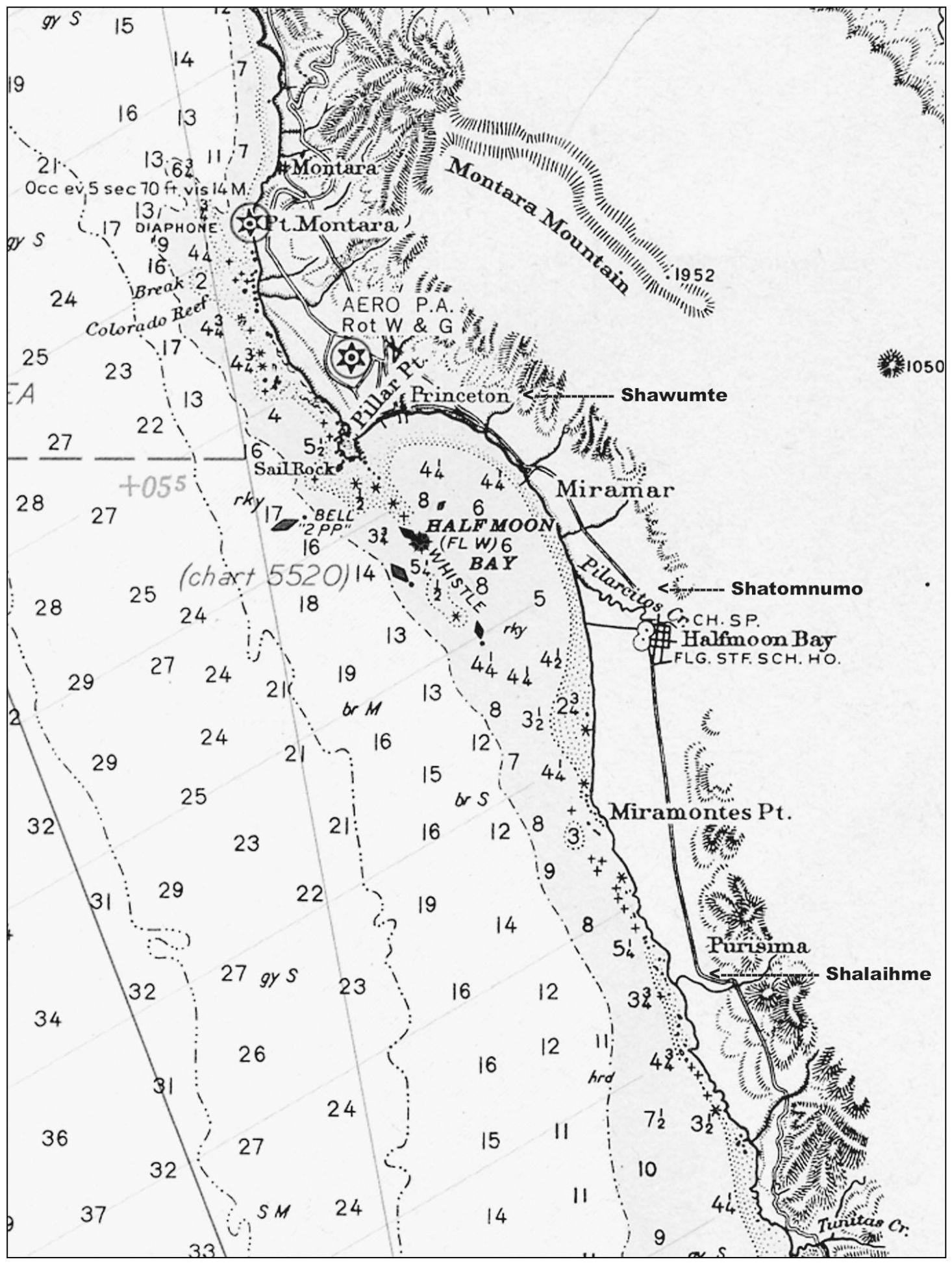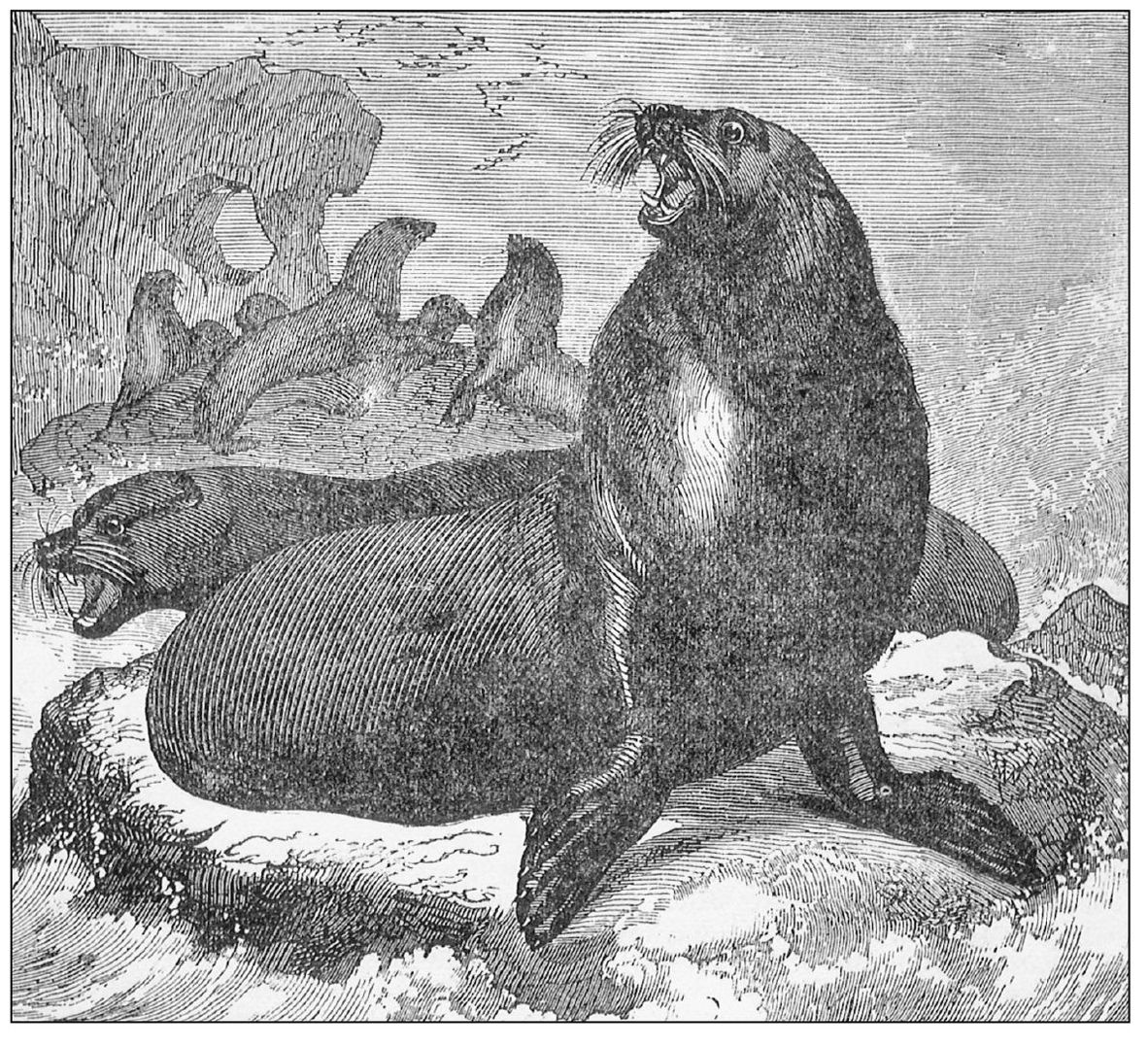One
OHLONE VILLAGES TO SAN BENITO
Archaeological evidence indicates that around 500 AD, Penutian-speaking Indians moved southwest from their former homes in the Central Valley Delta region into the San Francisco and Monterey area where Hokan-speaking people were then living. The Penutian speakers came to be known as Ohlones, probably from the Miwok word for western people. The abundance of animal and plant life in the area provided a stable and prosperous lifestyle along the coast.
Under the authority of the Bull of Pope Alexander VI, who allocated discovery rights to the New World between Spain and Portugal, Spain had claimed ownership of vast sections of the New World including the entire west coast of North America. Although several European sea captains sailed along the coast over the previous 200 years, fear of the rocky headlands apparently kept them from landing in the Half Moon Bay area. The situation changed when Spanish explorers, led by Gaspar de Portol, traveled on foot and on mules along the full extent of the coast from San Diego to San Francisco Bay.
The next 80 years saw the Spanish arrival in 1769, establishment of the missions with large ranching operations in the Half Moon Bay vicinity, secularization of the missions after the 1821 Mexican Revolution, issuance of large land grants by the Mexican government, and the founding of the village of San Benito on the banks of Pilarcitos Creek.
These engraved portraits appeared in The History of Man (1846) and provide a European interpretation of the natives of California.
Of the estimated 1,500 Ohlones living in San Mateo County in 1770, several groups occupied villages in the Half Moon Bay area, as noted in journals of the first Europeans to arrive. Approximate village locations are indicated on this map. Shawumte (National Register of Historic Places No. 78000771) was in the vicinity of Pillar Point. The marsh at Denniston Creek would have provided game, fish, and materials commonly utilized by Ohlones, and there was a plentiful supply of clams, mussels, and abalone to be found along the shore. Shatomnumo, about 2.5 miles south of Shawumte, was probably founded back somewhat from the mouth of Pilarcitos Creek to afford some shelter from the elements. Shalaihme, on the north bank of Purisima Creek, was one of a pair of villages occupied by the clan at Purisima. The other was known as the main camp.
At especially low tides, the tidal flats off Pillar Point are exposed for a considerable distance from shore, offering an enhanced view for nature lovers. The flats have been a source of food for the Ohlones and provided specimens for biology classes far and wide. Doc Ricketts, who figured in John Steinbecks nonfiction book Log from the Sea of Cortez and his novels Cannery Row and Sweet Thursday , collected specimens here for Western Biological Laboratories.
Deer were the principal source of meat for the Ohlones, although they also ate bear, elk, rabbits, wild turkey, ducks, quail, snakes, and lizards. The hunters spent long periods in a sweat lodge to remove their scent before a hunt and utilized the head and skins of deer to disguise themselves so they could more easily get close enough for a good bow and arrow shot.
Seals, sea otters, sea elephants, and sea lions lived in large numbers along the coast prior to the 1800s. This woodcut of seals on the Farallones Islands is from the 1878 Pacifica Coast Guide . Spanish authorities tried to prohibit trade in seal and sea otter pelts, but demand for them was so intense that the industry grew rapidly until it had all but collapsed by the 1820s, as the animals became scarce due to over-hunting.
Naturalist Johann C.D. Schreber published Mammals Illustrated from Nature in 1775, including this drawing of phoca ursine linn as well as the next two drawings. Sea lions gather along the tidal flats along the coast between Moss Beach and Pillar Point as well as at other spots along the San Mateo County coast. The populations of elephant seals, harbor seals, and sea otters are now increasing after a severe decline.
Sea elephants were common in the area at one time, but they almost disappeared from the San Mateo County coast. In recent years, the population at Point Anno Nuevo has flourished, and there have been signs of another colony being established somewhat further north. Schrebers image is labeled phoca leonine linn .
Schreber made this image of phoca hispida , a ringed seal common to the Arctic. This and the previous two images were engraved on copper. Harbor seals frequent spots on the local coast. The image illustrates the relatively short and inflexible front and rear flippers distinguishing seals from seal lions.





















